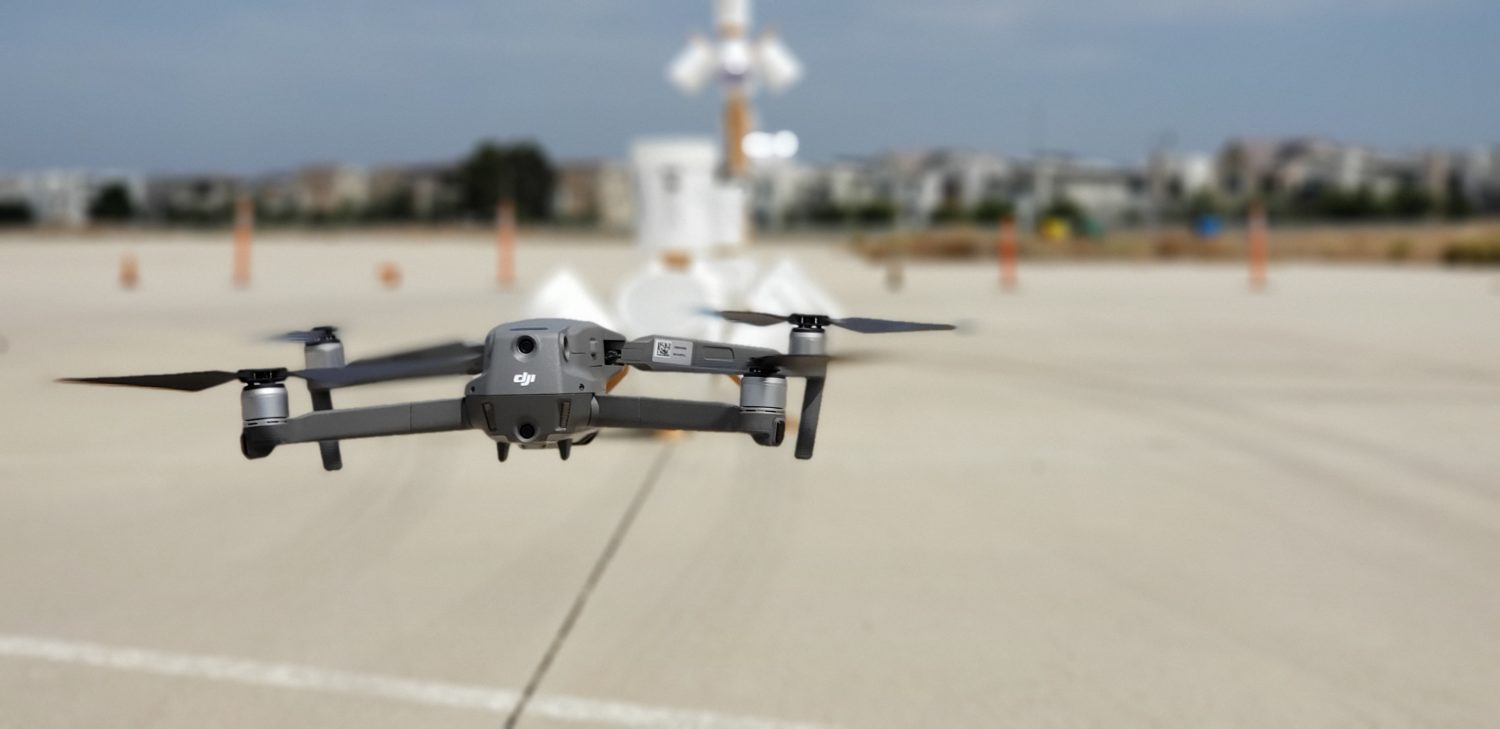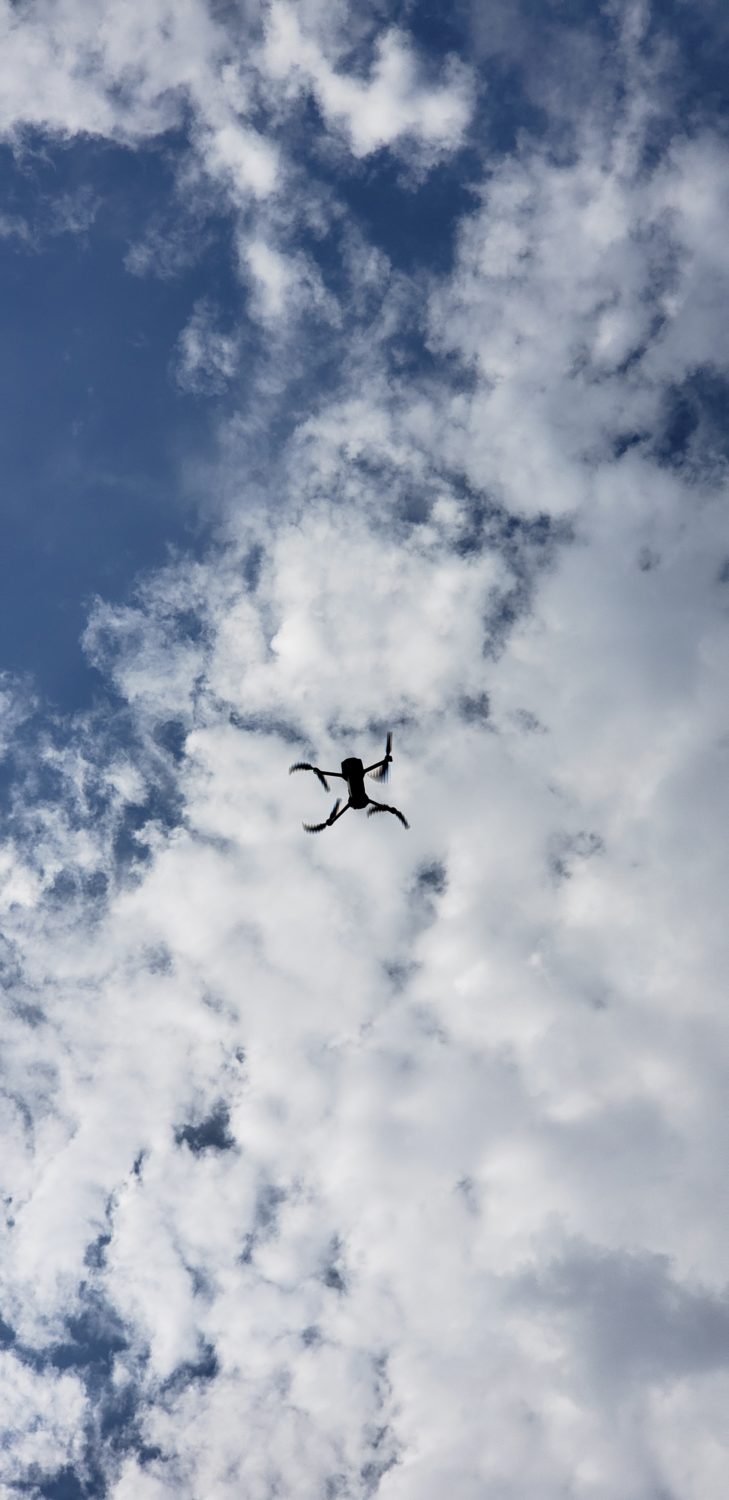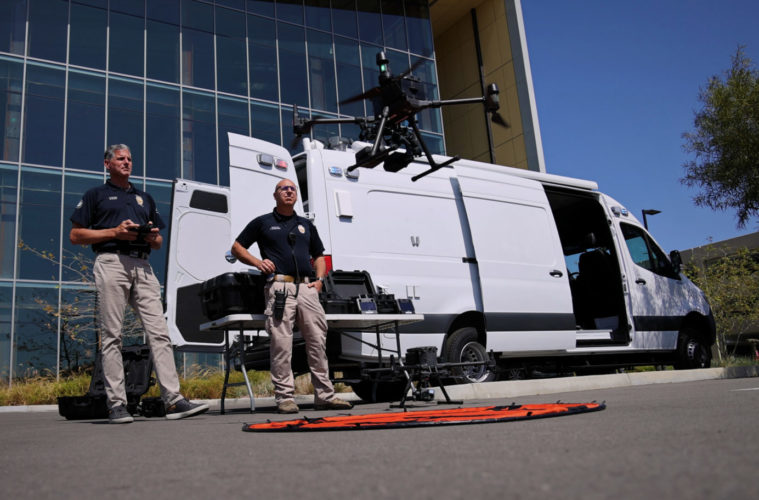From tracking an arson suspect with infrared cameras along the 261 Toll Road, to ensuring the safety of Silverado Canyon residents when roads were inaccessible from mudslides, the use of aerial drones could very well be showcasing the future of law enforcement in Irvine.
Equipped with a fleet of 11 DJI drones, the Irvine Police Department’s aerial drone unit has flown in more than 300 missions since its establishment in 2019.
For drone enthusiasts, DJI is a pioneer in creating accessible drone technology for the public.
Now, a partnership with the Orange County Fire Authority allows the Irvine Police Department drone unit to directly assist OCFA in search and rescue missions, terrain mapping and general wildfire monitoring.
Orange County firefighters in partnership with the Irvine Police Department’s drone program utilized a drone with infrared technology to seek out hot spots from yesterday’s Pico Fire in Rancho Mission Viejo. @IrvinePolice https://t.co/rbmznzsOcz pic.twitter.com/KPyei1UsCW
— OCFA PIO (@OCFA_PIO) July 7, 2021
Officially known as the Unmanned Aircraft System (UAS) Team, IPD’s drone program was adopted by the Irvine City Council on September 25, 2018, with an initial budget of $29,000.
Since then, the IPD’s drone unit has grown from a small team of four officers, into nearly a dozen officers, working the UAS Team as collateral assignments.
Officer Christopher Bees, a sergeant with the Irvine Police Department, explained that all the members of IPD’s drone unit are on collateral assignment, meaning they work a normal shift, while manning the drone equipment in addition to their day-to-day responsibilities.
“We recently upped to 11, so we now have eight officers, one civilian, myself and one lieutenant,” Bees explained. “The drone team is a collateral assignment at Irvine PD, so none of us are full-time. It’s similar to our SWAT Team or Crisis Negotiation Team. It’s our normal job, plus we do drones.”
Bees, is currently a patrol sergeant who has been an Irvine police officer since 2007, and also helped author the UAS policy and is currently the team’s lead sergeant.

Photo courtesy of the Irvine Police Department
In terms of aerial equipment, Irvine PD’s fleet of DJI drones, the Matrice 300, operates on approximately 35 minutes of flight time.
DJI’s Matrice 300, which Bees refers to as the M300, is an intuitive aerial device, as it can host a variety of attachments including infrared cameras. The M300 retails for a base price of approximately $10,000.
“The M300 is the larger platform, and it has about a 35-40 minute flight time, and it has the ability to house different payloads – you can put a camera on it, a thermal camera, a spotlight, a megaphone,” he explained.
Alternatively, Bees added that drones have also become a welcome use in assisting the Irvine Police Department in criminal investigations, as they can become high-intensity situations.
“Often times a drone is a great deterrent – like if you were [a suspect] considering running and you saw a drone nearby, you’re probably going to rethink that, right?” Bees points out.
Considering the context of the 300 missions IPD’s drone unit has flown, Bees explained that the use of drone technology spans a variety of situations in Irvine and within greater Orange County, while assisting OCFA.
“We have a partnership with Orange County Fire Authority, so we meet with them regularly, train with them regularly and fly with them regularly,” he explained.
Bees said the drones are now being used as a tool in mapping traffic incidents and have even been used to provide a visual deterrent while executing surveillance in criminal investigations.

Photo courtesy of the Irvine Police Department
“It helps us do our jobs safer, and reduces the risk to both officers and the public,” he explained. “It allows us to see into a place without having to put that officer in danger – or search areas that we couldn’t necessarily get to without putting the officer at risk.”
While drone technology is anything but new, there is still plenty of public skepticism regarding the ability of law enforcement agencies to overreach boundaries when using this type of surveillance technology.
As one of the authors of IPD’s drone unit policy, Bees says he is aware of the negative public opinion involving drone technology, but said privacy and legality were primary focuses when creating IPD’s UAS policy.
“I think you can break it down into a couple different points – one would be legality; whatever drone use we’re doing, we want to make sure it’s in compliance with whatever laws we have,” Bees said. “Privacy is a huge one, because we want to utilize these [drones] but at the same time respecting everybody’s privacy.”
As drone technology becomes more commonplace, Bees said he is willing to bet that more industries outside of law enforcement will continue to incorporate the devices.
“I think it’s a matter of time before everybody’s utilizing it,” Bees said. “Every business, whether law enforcement or not, is looking to use the best technology for the job. Especially as these commercially available drones become more affordable, able to fly longer – it’s a lot easier to do our job safer, utilizing these tools when appropriate.”
Advertising disclosure: We may receive compensation for some of the links in our stories. Thank you for supporting Irvine Weekly and our advertisers.

